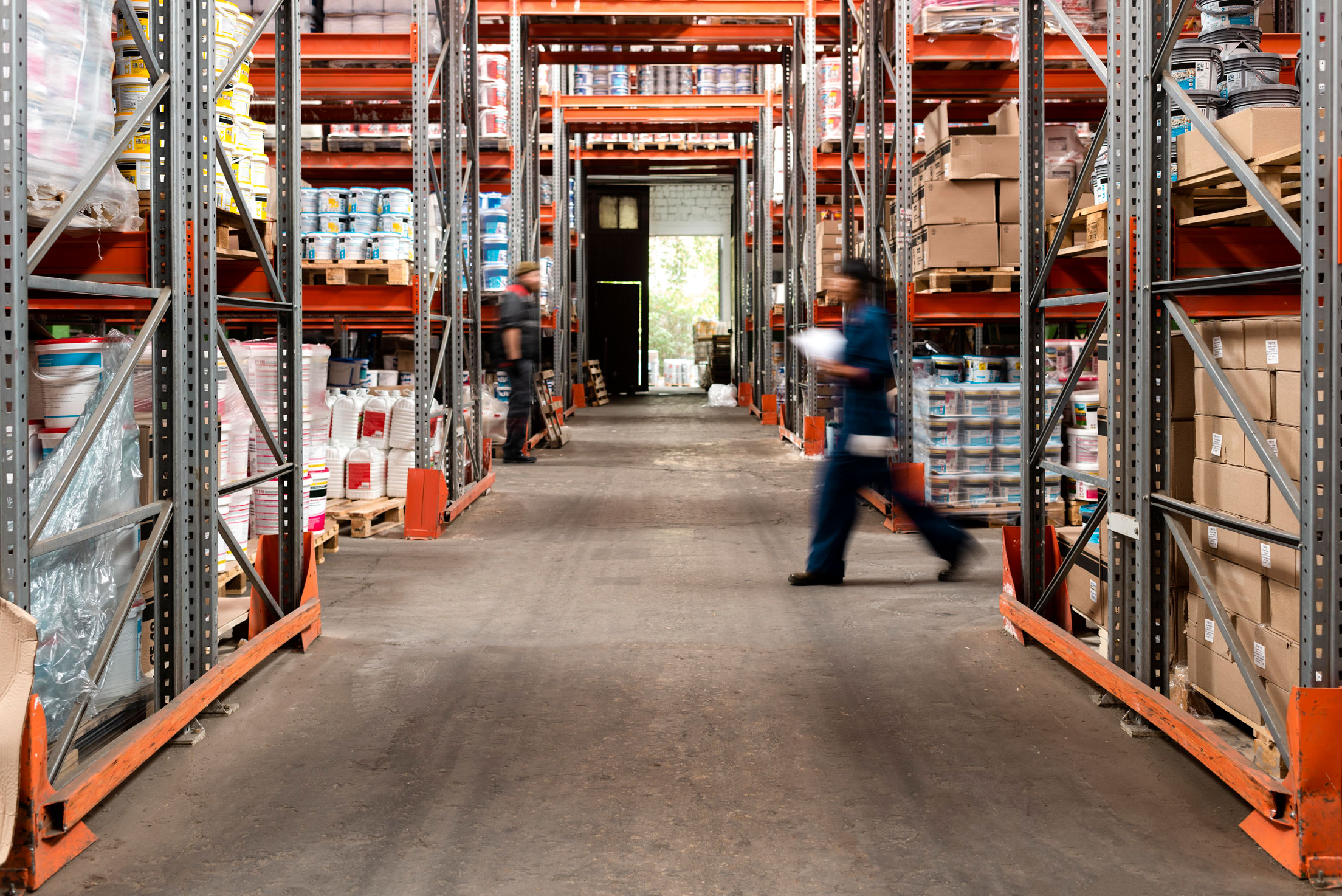When is Peak Shipping Season and How Should You Prepare?

For small businesses that source products from overseas, staying mindful of your operational timeline is crucial, especially during peak shipping seasons. These high-demand periods can significantly impact your ability to move inventory efficiently and meet customer expectations.
Peak shipping season typically sees a surge in parcel volumes driven by holiday sales, increased consumer spending, and seasonal restocking. As logistics networks become overwhelmed, businesses may face shipping delays, higher freight costs, and service disruptions.
Yet, with the right preparation, these challenges can be turned into opportunities. Businesses that plan early and adapt strategically can boost sales, expand their customer base, and strengthen their competitive edge during these critical months.
Understanding Peak Shipping Season
Peak shipping season typically kicks off in the fourth quarter (Q4) of the year and often extends into early Q1, coinciding with major global and regional holidays. This period is driven by a dramatic increase in consumer purchases, holiday gifting, and year-end inventory restocks.
From October to February, global supply chains face intense pressure. Retailers, manufacturers, and logistics providers scramble to meet demand, manage inventory, and fulfil orders as quickly as possible.
For businesses or individuals shipping in and out of Singapore, this period can be especially demanding, as suppliers also experience logistical congestion and factory closures.
Why It Matters for Businesses
Peak season shipping isn't just a logistics issue. It directly affects your bottom line in the following ways:
1. Timely Deliveries Influence Customer Experience
Given how competitive the e-commerce industry can be, timely deliveries are a non-negotiable customer expectation. And during the shipping peak season, even a slight delay can lead to:
- Missed gifting deadlines during holidays
- Cancelled orders and refund requests
- Frustrated customers taking their business elsewhere
If you're shipping from overseas, these delivery timelines become even more sensitive due to port congestion, customs delays, and increased demand.
2. Customer Satisfaction and Brand Loyalty Are on the Line
During peak seasons, when buyers are often shopping under time pressure, businesses that communicate clearly, ship on time, and provide accurate tracking updates stand out. These positive experiences can potentially encourage repeat purchases and promote trust, even in the midst of seasonal challenges.
Conversely, inconsistent service during peak season could affect your reputation. Delays, lack of updates, or mishandled orders during high-stress shopping periods could lead to negative reviews and social media backlash. In today’s connected world, even a few public complaints can influence potential buyers and drive them toward competitors.
Key Peak Seasons to Watch Out For
To effectively manage logistics and avoid costly disruptions, businesses must identify and prepare for peak shipping seasons in advance.
Singapore’s multicultural landscape, coupled with its role as a global trading hub, means there are multiple high-demand periods throughout the year that affect both local and international supply chains.
These are the key peak seasons to plan for:
1. Singles Day (11.11)
Singles’ Day on November 11, originally popularised in China, has evolved into one of the largest online shopping festivals globally. E-commerce giants like Alibaba, Lazada, and Shopee run massive flash sales, offering deep discounts on electronics, fashion, beauty, and lifestyle products.
This mega-sale event causes a sharp increase in order volume and parcel shipping activity, especially for goods shipping from China to Singapore. Businesses must prepare for extended fulfilment timelines, limited courier availability, and possible customs delays.
2. Black Friday and Cyber Monday
Falling immediately after Thanksgiving in the U.S., Black Friday (late November) and Cyber Monday (the following Monday) have gained tremendous traction in Singapore. This is thanks to global e-commerce platforms and cross-border shopping.
These shopping events are heavily tech-focused, with significant sales on gadgets, appliances, gaming devices, and fashion. With increased interest in overseas deals, parcel shipping services experience surges in volume that often overlaps with 11.11 and year-end sales, creating congestion across regional delivery networks.
3. Christmas and Year-End Sales
The Christmas period leading up to December 25 is one of the busiest shipping times globally, and Singapore is no exception. Consumers begin shopping for gifts, holiday décor, food hampers, and festive outfits early in December, with sales peaking in the final two weeks.
This season also kicks off a broader year-end shopping frenzy that continues through Boxing Day and New Year’s Day, stretching the capacity of shipping carriers and warehouse operations. This will then cause international shipping to slow down due to port congestion and limited air freight space.
As such, online and brick-and-mortar retailers alike face heightened demand and tighter delivery windows, particularly for last-minute orders.
4. Chinese New Year (Varies, Jan–Feb)
Chinese New Year (CNY), which marks the start of the lunar calendar, is one of the most significant and busiest peak shipping seasons across Asia. In countries with large Chinese populations, such as Singapore, China, Taiwan, and Malaysia, this festive period is celebrated with large family gatherings, gift exchanges, and traditions that involve cleaning and redecorating homes. As a result, consumer demand surges in the weeks leading up to the holiday, particularly for items like food hampers, snacks, home décor, and traditional attire. To align with the holidays, e-commerce platforms and retail outlets often run a lot of promotions, resulting in a flurry of orders and tight delivery schedules.
As the holiday approaches, the logistics landscape becomes increasingly strained. Many factories and suppliers shut down for one to two weeks, especially in China, halting production and causing a ripple effect throughout global supply chains. Port operations may be reduced or paused entirely, leading to shipping delays, backlogs, and increased freight costs. Even within Singapore, local courier services may experience capacity constraints.
Businesses that fail to plan ahead during this critical window risk stockouts, missed delivery deadlines, and dissatisfied customers.
5. Hari Raya Puasa (Varies)
Also known as Eid al-Fitr, Hari Raya Puasa marks the end of Ramadan and is a key cultural and religious event for the Malay-Muslim community in Singapore, Malaysia, Indonesia, and other Muslim-majority regions.
Consumer spending typically spikes in the two weeks leading up to the celebration, with increased demand for festive foods, traditional clothing, home decorations, and gifts. Retailers and online stores often run Hari Raya promotions and flash sales, resulting in a significant uptick in parcel deliveries and last-mile logistics activity.

Challenges of the Peak Shipping Season
Before you can effectively prepare for the peak shipping season, it’s important to understand the specific challenges your business might face.
1. Increased Shipping Costs
During peak periods, demand surges and carrier capacity tightens, which could lead to significantly higher shipping rates across all modes of transport. Businesses may see sudden increases in freight charges, especially on popular international routes across Asia.
Without early planning and rate negotiations, these spikes can cut into your margins or force you to raise customer prices to stay profitable.
2. Limited Carrier Capacity and Delays
Logistics providers often operate at full capacity during high-demand seasons. This means:
- Longer lead times for both domestic and cross-border deliveries
- Fewer available shipping slots for small to mid-sized businesses
- Priority given to clients who pay premium rates or hold long-term contracts
Such delays can throw off delivery timelines, leading to stockouts or frustrated customers.
3. Inventory Management Strain
Striking the right balance between overstocking and understocking becomes more challenging. If you order too much, storage costs go up. Too little, and you risk running out of key products during peak sales moments.
This issue becomes more complex when relying on overseas suppliers, especially from manufacturing hubs that shut down or reduce operations during regional holidays.
4. Greater Demand for Customer Service
With higher order volumes come more customer service inquiries, ranging from shipping updates to product availability and returns. If your team isn’t prepared for the influx, response times slow down and customer satisfaction drops.
Unresolved delivery issues during the busiest time of year can severely damage brand loyalty and repeat purchase rates.
5. Supply Chain Disruptions
Peak season often overlaps with global holidays and regional slowdowns, causing ripple effects across the supply chain. Key disruptions may include:
- Factory closures
- Port congestion
- Customs clearance delays
- Limited transport availability
These issues impact both imports and exports, making it difficult to stick to planned inventory and delivery schedules.
Tips to Prepare for Peak Season Shipping
With increased consumer demand, limited carrier capacity, and tight delivery windows, proactive planning is essential to avoid missed deadlines and dissatisfied customers. Some of the ways to do this include:
1. Plan in Advance
Successful peak season logistics begin months before the first order is placed. Ideally, you should start planning 2–3 months in advance to ensure everything is in place. Advanced planning gives you a competitive edge, allowing you to lock in better shipping rates, secure warehouse space, and avoid last-minute scrambles.
Key steps include:
- Analysing historical sales trends to forecast demand
- Pre-booking transport capacity with logistics providers before prices surge
- Adjusting inventory levels based on product popularity and expected spikes
- Identifying key selling periods such as major holidays, online sales (e.g. 11.11 or 12.12), and cultural events
2. Inform Your Customers and Clients
Clear communication is critical during peak periods. This is because setting expectations with your customers beforehand helps build trust and keep support queries manageable.
Best practices include:
- Publishing clear cut-off dates for holiday deliveries across your website and social media
- Displaying real-time shipping notices on product pages and checkout screens
- Sending proactive email updates about order status or potential delays
- Offering order tracking and estimated delivery dates to boost transparency
3. Partner With Experienced Freight Forwarders
Navigating peak season logistics on your own can be risky. An experienced parcel forwarding or shipping service, such as Com&Buy, can be instrumental in helping you manage complexity and avoid costly missteps.
A reliable logistics partner can:
- Secure optimal shipping routes and schedules despite high demand
- Handle documentation, customs clearance, and regulatory compliance
- Provide contingency plans in case of port congestion, delays, or rerouting needs
- Advise on cost-saving strategies, such as consolidating shipments.
4. Coordinate Closely With Suppliers
Maintaining strong relationships with your suppliers, especially those located overseas, is vital during peak seasons. This is because miscommunication or delayed updates can impact your entire fulfilment timeline.
To streamline coordination:
- Share accurate sales forecasts and projected order volumes
- Communicate promotional schedules so suppliers can adjust production
- Set clear lead times and order deadlines
- Check in regularly for updates on production and shipping progress
5. Strengthen Customer Support Capacity
With a rise in orders comes a surge in customer queries, concerns, and complaints. Be ready to scale your support operations so service quality doesn’t suffer. Having a responsive support team improves the customer experience and increases the likelihood of repeat purchases.
Preparation tips:
- Hire seasonal or temporary staff to cover peak periods
- Use automation tools like chatbots or ticketing systems for faster responses
- Update your FAQs to cover common peak-season concerns (e.g. delivery timelines, returns, order tracking)
- Train your team to handle logistics-related issues professionally and empathetically
6. Diversify Shipping Options
Relying on a single carrier or shipping method can leave your business vulnerable when delays or capacity issues arise. Instead, diversifying your logistics strategy creates much-needed flexibility.
Ways to diversify:
- Leverage multiple shipping providers to reduce dependency on one vendor
- Use a mix of transport modes (air, sea, land) based on urgency, cost, and volume
- Tap into regional couriers for faster and more cost-effective last-mile delivery
- Offer multiple delivery options at checkout to give customers more control
By spreading risk across various logistics channels, you improve resilience and reduce the chance of service disruption.
Work with Com&Buy to Work Through the Challenges of Peak Season Shipping
Peak shipping season is a make-or-break period for many businesses. From supply chain bottlenecks and rising freight costs to inventory shortages and delayed deliveries, the challenges can be overwhelming if you're unprepared. However, with proactive planning, clear communication, and the right logistics strategies, you can turn seasonal hurdles into opportunities for growth. Success during peak periods can strengthen your brand's reputation, build customer loyalty and boost profitability.
This is where partnering with a trusted parcel shipping service like Com&Buy can help simplify the process for you. Whether you're shipping from China, Thailand, Taiwan or any other country overseas, Com&Buy helps you stay agile and competitive during the most demanding times of the year. From securing timely transportation to offering transparent tracking and responsive support, Com&Buy ensures your goods move smoothly even during the busiest times of the year.
Let us handle the complexities of peak season shipping so you can focus on what matters most, growing your small business.

